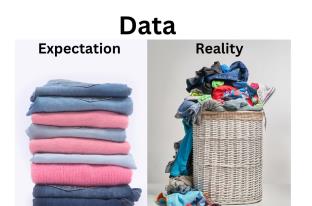Data Migration is the process of transferring data from one location to another. This can be between storage mediums, applications, or servers. Migration can also be used to transfer from on premises storage to a cloud-based environment.
There are multiple methods and use cases for migrating data, all with different benefits and considerations. Understanding the different types and strategies for data migration can help you decide the best data migration method for you.
Why do I need Data Migration?
There are many reasons for needing to undertake a data migration project. Examples of this can be replacing servers and storage devices or consolidating data into a single environment.
Recognising that you need to undertake a migration process is an important part of the process and can be determined by your situation. You might find yourself limited by physical hardware, require new features in your main application, have licencing costs driving a change in platform or receiving new data that need to become compatible with an existing system.
Mediums of Data Migration
Database Migration
This is where you will be looking to change the type of database you are using, this is most commonly needed for organisations that are looking to update their database from a legacy system to something more modern. A good example of this is migrating from an Oracle database to PostgreSQL. The benefits of doing this include; a reduction in overhead costs, having a cloud ready database and having a more secure solution [for more information on this look at our database migration blog (future blog)
On premises to on premises
On premise migration is needed due to either moving to new servers/storage devices or data centre, where the hardware is still selfhosted. This can be achieved via either data transfer or physically moving storage devices.
On premises to cloud
On premise to cloud migration occurs when moving from on premises data storage such as locally hosted servers and storage to a cloud solution like Microsoft azure, Amazon Web Services (AWS) or Google cloud. For this case you will need to transform, extract and load data from on premises servers or storage and upload to the cloud-based solution.
Cloud to cloud
This is where migration is undergone by taking data from one cloud solution to another. This may require transformation to fit the format of the new cloud solution. You may need this if the costs of your cloud platform can be reduced by moving to another service, or if there are additional resources available that you need to make use of.
Types of Data Migration
Rehost
Sometimes referred to as “lift and shift”, rehosting is the process of migrating a workload in its current state without any modifications. This is a popular strategy for organisations that are new to cloud computing as it is an easy way to start using cloud services.
The advantages of rehosting are that moving workloads in their current state means there are no architectural or organizational changes that need to be undertaken. Due to the nature of this approach this is also the fastest method of migration.
The disadvantages of rehosting are that the costs are quite high as applications will not be modernised due to the straight transfer of data in its original format. The other downside to rehosting is that you are not able to take full advantage of cloud innovations which in turn brings no improvement to customer experience.
Replatform
Replatforming applies a series of changes to update aspects of the migrated data. For example, taking advantage of auto scaling or using a managed database. This makes the database architecture more cloud native.
The advantages to replatforming are that costs for business can be reduced as technologies such as auto scaling and managed storage devices take away operational costs. The other advantage of refactoring is that you are able to add new capabilities and features without going over migration timescales.
The disadvantages of replatforming are that there is a certain limit to the amount of changes that can occur during migration, this then means that there is a backlog of possible changes that will need to be made post migration. Replatforming also needs some cloud skills already to migrate due to the more hands-on nature of the approach.
Refactor
Refactoring is the most intensive migration solution as it is a detailed process of completely redoing the architecture and coding of all components before completing migration. While this is the most intensive form of migration it is also the most optimised and gives the most control.
The advantages to refactoring are that due to auto scaling and automation, organisations can expect more reliability and resilience across the board. Full integration also gives you increased flexibility to use all cloud services and in turn greatly reduces costs.
The disadvantages of refactoring are that the process is very time consuming and complex which will have an initial business impact in terms of cost as well as resources. Refactoring will also require advanced knowledge of cloud computing due to the intricacies of the process.
Data Migration Strategies
Big Bang Migration
A big bang migration is where a full migration process is done in a single load and is completed in a set window of time. Due to this there will be downtime for the processing and load transitions of this process to complete.
Due to the single time event a big bang migration can of course be a big time saver. However, this can be a very high-pressure working environment due to the limited time window and the precision needed. If some elements of the migration are compromised this can lead to load failures thus slowing down the migration process and increasing downtime.
Trickle Migration
A trickle migration is almost inverse to the big bang method. For a trickle migration both new systems run in parallel during integration and data is slowly migrated in pieces. This takes some complex planning however overall; the risk factor is much smaller and there is less pressure. This does result in a large amount of latency in the source systems for the migration is being completed.
Conclusion
With this blog you should have a better understanding of the core data migration concepts and has given you a better idea of what goes into a data migration project as well as the approaches to migrating and which may be best for you and your organisation.
If you are interested in embarking on a data migration project or you would like more information about data migration solutions, get in touch and we can help make your data migration process a success.
Transform data use in your organisation
Book your free data assessment today, and find out how much of an impact Sentinel's Master Data Management tools can have on your business.
- Strict control and monitoring of data quality
and completeness. - Built using the ICO’s ‘data protection by design’
approach. - Trusted by public sector organisations and local authorities.
- Experienced, dedicated team of data integration and data sharing specialists.
Take the hassle out of data management. Call us on +44(0)800 612 2116 or send us an email [email protected].



